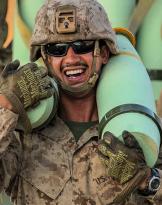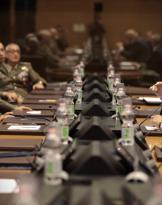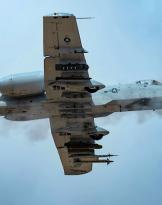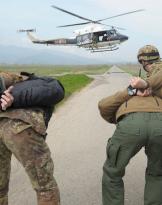To correctly address the issue of safety at sea we must immediately specify how initially for maritime safety it was intended only in the safety, ie in the preservation of ships from the risks inherent in navigation. Starting from the case Achille Lauro it also started to talk about security, or the protection of the ship and crew from external actions. In a straight line the reference Conventions are that of Solas, of 1974, and that of Montego Bay, of 1982, which act as a general framework to which the other international multilateral treaties in the report refer.
A first profile that needs to be tackled in the field of illegal activity at sea is certainly represented by the trafficking of archaeological objects. On this disposition the Montego Bay Convention that to the art. 303 offers the power to establish a contiguous archaeological zone of 24 miles below the surface to the related state. In Italy, despite not having foreseen this band, the Code of cultural heritage has dictated an autonomous discipline, an intent to ultra-protection of cultural heritage. Linked to the theme of cultural heritage is that of environmental law: other activities of contrast can be had in the field of pollution where in Italy, although not having an exclusive economic zone, some areas have been declared environmental protection and in the same legislation is applied Italian also against ships flying foreign flags.
Another hot topic regarding safety at sea is the fight against piracy. The art. 107 and 110, and the distinction between it and terrorism is important (although this is difficult in practice). The criterion constituting the crime of piracy is that of the two ships, the one pirated against another, related by a animus furandi private: the capture of good fruit. In this sense it is necessary to specify how the pirate act, with the exception of a crew mutiny, can not be carried out by a warship and is configured only if it is carried out in international waters, on the high seas. offense of armed robbery in case the act is committed in territorial waters.
The key point for the fight against illegal activities at sea is therefore represented by cooperation between States, which has also been implemented on other fronts, such as the fight against drug trafficking and the transport of weapons of mass destruction that could affect to international terrorism.
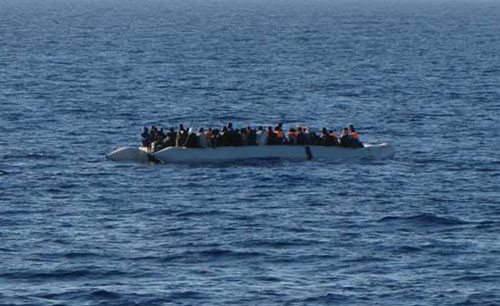 An element of great relevance is however represented by the problem concerning immigration and the crimes that can hide behind refugees. The area of current political instability extends uniformly throughout North Africa and the preferential channel of irregular immigration is precisely represented by the Mediterranean. The boats used, which almost entirely depart from the ports of Zuwarah, Sabratha, Tripoli and Carabulli, for the transport of migrants are of three types: the dinghy, the boat from 250 / 300 people with engine on board, and the fishing boat. When the military ship approaches the boat at the helm there is no one and the smugglers hide among the other migrants. Here arise the first problems of a criminal-law nature in the matter of Italian jurisdiction and enforcement of any enforcement measures on board these ships. For this purpose, the District Anti-Mafia Directorate of Catania has declared that the coercive action possibly put in place has a preventive way. This was also expressed by the Supreme Court of Cassation (sent N. 14510 / 2014) which reiterated the theories previously expressed.
An element of great relevance is however represented by the problem concerning immigration and the crimes that can hide behind refugees. The area of current political instability extends uniformly throughout North Africa and the preferential channel of irregular immigration is precisely represented by the Mediterranean. The boats used, which almost entirely depart from the ports of Zuwarah, Sabratha, Tripoli and Carabulli, for the transport of migrants are of three types: the dinghy, the boat from 250 / 300 people with engine on board, and the fishing boat. When the military ship approaches the boat at the helm there is no one and the smugglers hide among the other migrants. Here arise the first problems of a criminal-law nature in the matter of Italian jurisdiction and enforcement of any enforcement measures on board these ships. For this purpose, the District Anti-Mafia Directorate of Catania has declared that the coercive action possibly put in place has a preventive way. This was also expressed by the Supreme Court of Cassation (sent N. 14510 / 2014) which reiterated the theories previously expressed.
In any case it is applied in the waters within the height of the contiguous zone the art. 6 cp which allows the application of Italian criminal jurisdiction to migrants to prosecute smugglers and traffickers. Problems arise for the high seas which, ex art. 7 cp, is equal to the foreign territory and consequently the Italian jurisdiction is applicable only in the same way as international standards that allow it. Here the right of pursuit comes into play, concerning the boat penetrated in the contiguous Italian area that is being pursued by our ships and fleeing to capture. This institute allows us to pursue the ship even on the high seas until it enters the territorial sea of another State. The second institution is that of constructive presence where the mother unit is kept on the high seas and only the secondary units touch the national coasts: in this case the jurisdiction extends from the smaller boats to the mother ships. Under UNCLOS legislation there is also jurisdiction in the event that the boat beats the Italian flag, does not fly the flag or if the beating is false.
For all these crimes both art. 1235 of the navigation code that the art. 57 cp define that the commander of the warship is a judicial police officer. In a boat, however, it is only the commissioner who has legal training and is the only one to whom the commander can rely. The commissioner on board, therefore, represents the key element despite the permanent responsibility of the commander.
(photo: US Navy / Navy)



